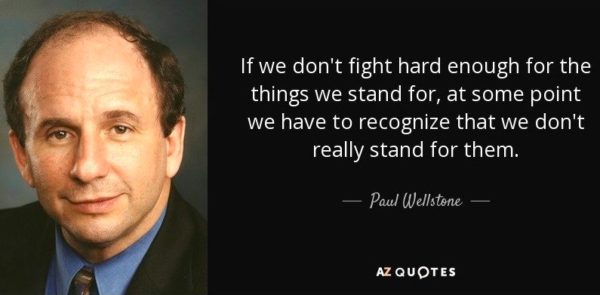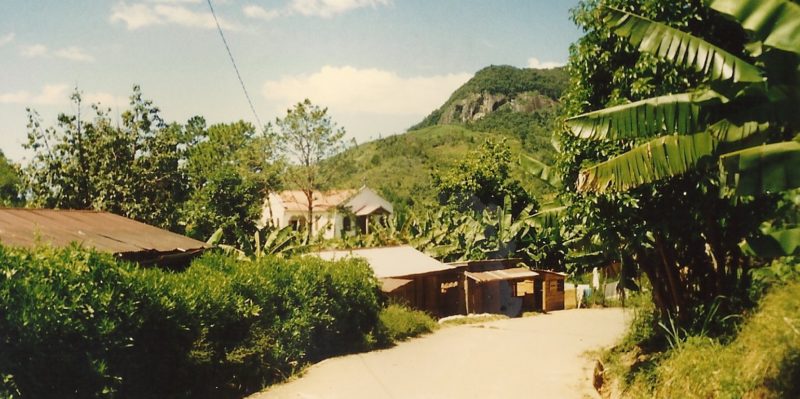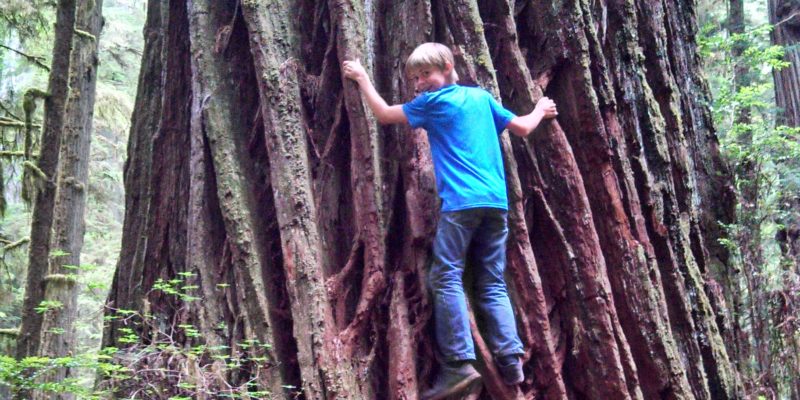My belly is full tonight. My drinking water is safe. In Cite Soleil, down by the harbor, many people eat clay, nibbling a little bit here and there throughout the day just to keep their bellies from aching as they go to bed. They flavor it with salt to make it taste better.
So, how can this exist? Here are just some of the challenges facing Haiti: 1) Almost no schools, the percentage of kids that go to school is somewhere less than ten percent. 2) Because the language that educated Haitians speak is French and not Spanish or English, there is less opportunity for efficient commerce with its neighbors. 3) Because almost nobody speaks anything but a type of creole that is only found in Haiti, they are essentially an isolated people culturally, except for a geographic tie to the Dominican Republic and a tie with other Haitians living in the United States. 4) Only a couple of neighborhoods have regular electricity. Most people do not pay for the electricity they do get. You only have to pay if you want a transformer to protect you from power surges. As a result there is little economic incentive to make investments in improvements. 5) Gas is extremely expensive. 6) The traffic prevents effective commerce within the country. 7) There is a major cholera epidemic, and other health conditions are horrendous. 8) They have an 80% unemployment rate. 9) They don’t have many natural resources left except for its beaches, but most tourists are afraid to visit the Haitian side of Hispaniola.
(The Wi-Fi connection and electricity haven’t been working recently, so this post is a bit longer than usual since I have accumulated a backlog of things I’ve written off-line.)
Wednesday we took four of the kids to horse therapy. Some of the physically challenged kids benefit from sitting on a horse as it gently walks around the paddock. It helps them to develop their muscle coordination and balance. It costs $35 U.S. per child to do this, so only four can go once a week. They say they can see a difference in the kid’s motor skills since they started riding horses. It certainly puts enormous smiles on their faces when they are up in that saddle.
On the way to horse therapy, I watched the following event unfold: coming toward us, there were three lanes of traffic occupying the two left lanes encroaching over the middle. The semi on my far left was belching out plumes of black exhaust and having a hard time staying up to speed. Then, a front-end loader tries to speed past all three of lanes, creating a solid wall of speeding traffic racing down the national highway. On our right was a man on foot pulling a giant rickshaw type contraption with car tires as wheels and it was loaded at least eight feet tall with three or for sofa sized sacks of bottles and cans. We were driving down the middle of the road watching all four vehicles coming right at us. We just barely made it past the man pulling his wagon in time to fly up onto the sidewalk on our right and out of the way of the oncoming front-end loader.
A friend from my childhood, Jamie, keeps often visits the orphanage. She recently bought a motorcycle and keeps it at the orphanage. I decided to take the motorcycle out through the town. I found that it was sometimes necessary speed through the lane changes in order to avoid becoming a traffic hazard by staying in my lane and following traffic rules. It’s the same principle as needing to sometimes be a little aggressive when merging onto a freeway in order to avoid coming to a full stop on the on-ramp.
I was driving to meet Patrick, a friend of Jamie’s. Patrick hopped on back as my tour guide into some of the hilly side streets. On these roads the traffic is slow. The UN SUV in front of me carefully slipped its left tires into the deep rut while its right tires rocked up a big mound of dirt before steering sharply to the other side of the road to avoid the huge pits. I had to choose between riding through the patch of softball sized rocks or driving up the large trash pile. These are normal neighborhood streets with regular vehicle traffic. It’s like the back country mountain roads we took on our family trip out west last summer. I can say from experience that we wouldn’t be able to pull our pop-up camper trailer on the side streets of Port au Prince.
We visited a place called The Apparent Project. It’s a co-op of Haitians who make jewelry out of recycled garbage. The proceeds allow them to keep from having to choose between letting their kids starve or leaving them on the steps of an orphanage. They also make pottery out of salted clay to symbolize the food they sometimes have had to eat.
I asked Patrick if all of garbage in the streets gets burned or if it ever gets picked up. He said that when it rains, it will often wash away all the garbage and clean up the streets. I wondered to myself, Where does it all go? Then, as I looked down from the hillside over the city, the answer seemed clear, Cite Soleil.
The next day, I met Will. He is a fireman, but firemen here carry guns and can arrest people. He drove ahead on his motorcycle with Patrick riding on the back and I followed behind them. It was much easier driving today without Patrick’s weight on back. And, I was able to try to follow Will’s path through traffic.
I don’t think I had that much fun in a very long time. The roads we were on today were all paved, except where they weren’t. Going into downtown from the southeast brings you through tight windy roads were there isn’t room to pass, at least for cars and trucks. Motorcycles are obliged to pass a stopped line of cars. Motorcycles are obliged to pull up to the front at a red light. Yes, there are at least half a dozen working stoplights that I’ve seen, and many more non-working ones.
To get to these fun windy paved roads, we had to pass a large tent type city. It’s just off a divided four-lane road that heads down to Cite Soleil. This road has almost no cars on it. It follows a ridge that provides an expansive view of one of the types of neighborhoods found throughout Port au Prince where there really aren’t any roads so to speak, it’s mostly just walking paths.
From here we turned up a side street that ends at an intersection with a major road, with the stop being on a steep incline. This is where it was helpful to be obliged pass all the stopped cars on that incline and come to a stop on the flat landing, even though we were extended a bit into traffic. This was an intersection that had a non-working stoplight. It also had a traffic cop directing traffic, but motorists mostly ignored him.
Our window to cross the road emerged when a large truck pushed his way halfway into the intersection, which caused a chain reaction with cars coming from two others directions. If we could ride his right side, that would shield us almost to the other side, but we would have to pass him and get in front of him before another truck quickly approaching from the right, which could claim the space we would be occupying. Of course we don’t plan the entire crossing before we venture into the zone. It’s too fluid for that. You just look for the catalyst that will make the fast moving cross traffic hesitate long enough to insert yourself as a variable on the chess match that is constantly at play in the intersection.
One of our plans was to stop at a bank. Patrick had to withdraw about seven thousand dollars for the orphanage. I had to exchange my 500 gourde bills for 100 gourde bills. That’s like exchanging a $20 bill for $4 notes. When I first exchanged my U.S. money for Haitian money, that’s what they gave me, but most people and stores won’t accept anything that big.
To enter the bank, we passed through an outside gate with armed security, then past the guy with metal detectors, then through the hallway with a guy sitting at a folding table who would write your name and ID number into a ledger. Patrick and I just walked right past these guys as he knew them personally. Then, we skipped past the line of people waiting at one teller window and went to a window where he knew the assistant manager. Patrick said he knew the other tellers would tell him they didn’t have enough money to withdraw that much at one time, so he went straight to the person who had the authority to give him the money he wanted.
After the bank, I asked them to take me past Hotel Oloffson and to help me find Pacot Breeze hotel, so I could later find them again on my own.
Hotel Oloffson, is a highly recommended place to go to hear great music on Thursday nights. Pacot Breeze was a hotel that had an awesome deal if you booked on Booking.com. We had to bounce around a bit to find Pacot Breeze. Later that afternoon, I would return on my own.
Fast forward to later that afternoon. First, before getting too far from the orphanage, I needed to get gas. It was about $4.70 per gallon. Then, it was off to my hotel. Since we had taken a slightly wrong turn on our way there earlier in the day, I knew that turning a couple of more blocks further down the road would be a little more direct. I wanted to be absolutely sure I could remember my way from the Oloffson to Pacot Breeze since I would be taking that route after dark when the band was done playing. This was very important because there are no street signs here and its not a good idea to be wandering around after dark in these streets unless you absolutely need to in order to see Haiti’s most iconic band. In fact, it turned out it was a very good thing I did my practice runs again in the day time because there are two very large missing manhole covers right where I needed to make a turn. I very judiciously took note of their precise locations.
So, what is the Pacot Breeze hotel like? It could be great, instead its a bit shabby with amazing potential as a fixed-upper. It has a pool, a restaurant, a secure compound in a fairly decent hillside neighborhood with nice lush tropical plants and trees. The ad on the internet says it has TV, which it does. There is a TV in the room, it just doesn’t get any reception. Its mostly other Haitians staying here and one guy from Canada.
Enough about this place this blog entry is all about the Hotel Oloffson. I rode over early to meet whomever I might meet. The band was doing their sound check for the show later that night. This place has more character in the dusty corner of its back stairwell than most places could only dream about on their entire property.
It’s a grand stately estate known as the Greenwich Village of the tropics. It is a mansion built for the family that produced presidents in the late 1800’s. After the last one executed all his political opponents in 1915, the people rose up and killed him in the streets. Fearing his replacement would be sympathetic to the Germans, the United States seized control of Haiti until 1935. During that time, they used the mansion as a hospital. Later, after being turned into a hotel, it welcomed many famous people from Jacqueline Kennedy and author James Jones to Mick Jagger and Jimmy Buffet. The gingerbread architectural detail remains from the original mansion as does the skyway through the palm and mango treetops and leading to the veranda that offers views of the city down the hill.
Take that backdrop and add a healthy dose of voodoo inspired art, sacred trees, and a magical psychedelic painted stone wall. This wall acts as the backdrop to the band, stretching some 60 feet long by 20 feet tall. The brightly painted abstract mystic dog lies beneath the warped impression of drummers and dancing women in flowing yellow and blue and green gowns. I think there were some bizarre lizard and tiki type creatures mixed in as well.
Two giant stacks of speakers rise ten feet tall and face into a very modest sized room with vaulted ceilings. Around nine o’clock, the crowd starts to arrive growing to over two hundred by the time the music starts. The steady beat works itself into a comfortable groove that could easily turn itself into a bouncy Grateful Dead song. Do I hear a Scarlet Begonias coming on? With ear piercing volume, the women in African style gowns and white headdresses contort their bodies on unison creating a mesmerizing dance. They bend way forward and swing their arms as if they were flying. The music turns strangely eerie before the ladies wail out a spiritual angelic choir sound. The owner of the hotel is a white man from Connecticut with Haitian roots. He started this band in the 1980’s as traditional folk band and it has morphed into something totally unique. He is also in a white head wrap raising his open hands to the sky as the backup singers the bongo drummers and other instruments you would find in any regular rock band, begin to play the audience into their voodoo world. The old and young, the expats, Rastas and hookers all soak up this pounding rock, psychedelic reggae, traditional voodoo inspired spiritual mash-up.
Every Thursday night this routine plays out at the Oloffson. Before the band started, I had the opportunity to listen for people speaking English and I met many people from various aid organizations. I heard about the declining state of one of the bigger hospitals. I heard that people in Cite Soleil live in separate areas that have names like Paris, Brooklyn, and Bel Aire. Paris has a miniature Eiffel Tower and the violence is so rampant that people from one area won’t venture into another area that is controlled by other gangs. The expats at the Oloffson mention the containers of medical supplies that have been held up at port for over six months. (This is surprising since I didn’t have to go through customs of any kind at the airport. I even went back into the receiving area through the door that said do not enter and passed the armed guard at one point.)
I must tell you about an eccentric voodoo practitioner named Adell who I met at the Oloffson. A Canadian translated as she told me about her practice. With ever so flamboyant flair, she slowly described that to understand voodoo is to understand Haiti, and voodoo is the path to all things beautiful, peaceful and full of warm loving spirits. It also is the path to understand all things negative. For her, she isn’t allowed to have sex at all, even with her husband. If she did, something devastating would happen, but she does have divine sex in her dreams and trances. November 2 is the biggest voodoo day of the year and on that day, the Oloffson enters a different reality. Many voodoo practitioners won’t even set foot on the Oloffson property.
After the show, I made it home safe to the Pacot Breeze. I had no interest in having more than one beer that evening when I kept thinking about those missing manhole covers I would have to confront on my way back in the dark.
And now a word from the website of local pitch and putt golf club: “At The Petionville Club, we know your free time and leisure activities are important. We offer a diverse range of service to meet the cultural, entertainment, and recreational interests of our customers in the Port au Prince area. Whether you are looking to meet new friends or just get away from it all, The Petionville Club can help shed the stress and worry of everyday life.”




